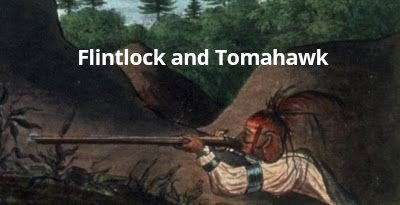https://www.hat.com/Curr3/AWI/Bx8343BDP.html
Wednesday, 26 February 2025
Monday, 24 February 2025
Friday, 21 February 2025
War On the Turtle's Back
Saturday, 15 February 2025
Friday, 14 February 2025
Expédition d'hiver 2025 Garnison de Québec
Facebook page where there is more
Snowshoeing in winter in Québec! A great weekend shared with our friend from the Détachement de la Colonie.Last of the Mohicans 1993 edition
Picked this up from our friendly neighbourhood charity shop for 60p. Didn't have a copy of this book so a welcome edition.
Sunday, 9 February 2025
Year of the Hangman: George Washington's Campaign Against the Iroquois 2006
Glenn F. Williams
Recommended by BT Carpy on my Raiders of the Mohawk Facebook group
Winner of the 2005 Thomas Fleming Award for the Best Book in American Revolutionary War History
Finalist for the Army Historical Foundation Distinguished Writing Award
After two years of fighting, Great Britain felt confident that the American rebellion would be crushed in 1777, the "Year of the Hangman." Britain devised a bold new strategy. Turning its attention to the colonial frontiers, especially those of western New York, Pennsylvania, and Virginia, Britain enlisted its provincial rangers, Tories, and allied warriors, principally from the Iroquois Confederacy, to wage a brutal backwoods war in support of General John Burgoyne's offensive as it swept southward from Canada in an attempt to cut the colonies in half, divert the Continental Army, and weaken its presence around British-occupied New York City and Philadelphia.
Burgoyne's defeat at Saratoga sent shock waves through the British command. But the efforts along the frontier under the direction of Sir John Johnson, Colonel John Butler, and the charismatic Mohawk leader, Joseph Brant, appeared to be impairing the American ability to conduct the war. Destroying Patriot settlements and farms across hundreds of miles of frontier, the British and Indian forces threatened to reduce Continental army enlistment, and more importantly, precious food supplies. Following the massacres at the well-established colonial settlements of Wyoming, Pennsylvania, and Cherry Valley, New York, the Continental Congress persuaded General George Washington to conduct a decisive offensive to end the threat once and for all. Brewing for years, the conflict between the Iroquois and colonists would now reach its deadly climax.
Charging his troops "to not merely overrun, but destroy," Washington devised a two-prong attack to exact American revenge. The largest coordinated American military action against American Indians in the war, the campaign shifted the power in the east, ending the political and military influence of the Iroquois, forcing large numbers of loyalist to flee to Canada, and sealing Britain's fateful decision to seek victory in the south. In Year of the Hangman: George Washington's Campaign Against the Iroquois, historian Glenn F. Williams recreates the riveting events surrounding the action, including the checkered story of European and Indian alliances, the bitter frontier wars, and the bloody battles of Oriskany and Newtown.
Clearing Iroquoia
Expensive but maybe the Library? E book is 50 dollars
In 1778, George Washington, Philip Schuyler, army officers, and New York officials began planning invasions against Iroquoia, the homeland of the Haudenosaunee and several other allied Indigenous nations. This invasion was one of the largest American offensives of the Revolutionary War, curated to punish the Haudenosaunee for raids against frontier settlements in New York and Pennsylvania. However, the resulting 1779 campaigns of Goose Van Schaick, Daniel Brodhead, and Generals John Sullivan and James Clinton were not simple retaliation. Clearing Iroquoia: New York’s Land Grab in the 1779 Campaigns of the American Revolution by Travis M. Bowman and Matthew A. Zembo critically examines archival materials from these campaigns to investigate the driving force behind the campaigns: removal. Through their research, Bowman and Zembo explore how colonial leaders ignored peace efforts and how George Washington ordered his officers to do the same – prioritizing the destruction of Iroquoia and placing native peoples at the lower end of a racial hierarchy to justify their actions. Using letters, journals, speeches, and reports, this book brings the buried truths to light, exploring these series of coordinated attacks that were designed to destroy Haudenosaunee political cohesion, clear the Indigenous population from the land, and replace it with a non-Indigenous one.
-
Our colonial Marine unit gets some last minute instruction before going to fight the British. Pinterest for more.
-
This is the first stage of an excellent project. This is the corner tower of a recreation of the fort in the movie Drums Along the Mohawk...
























